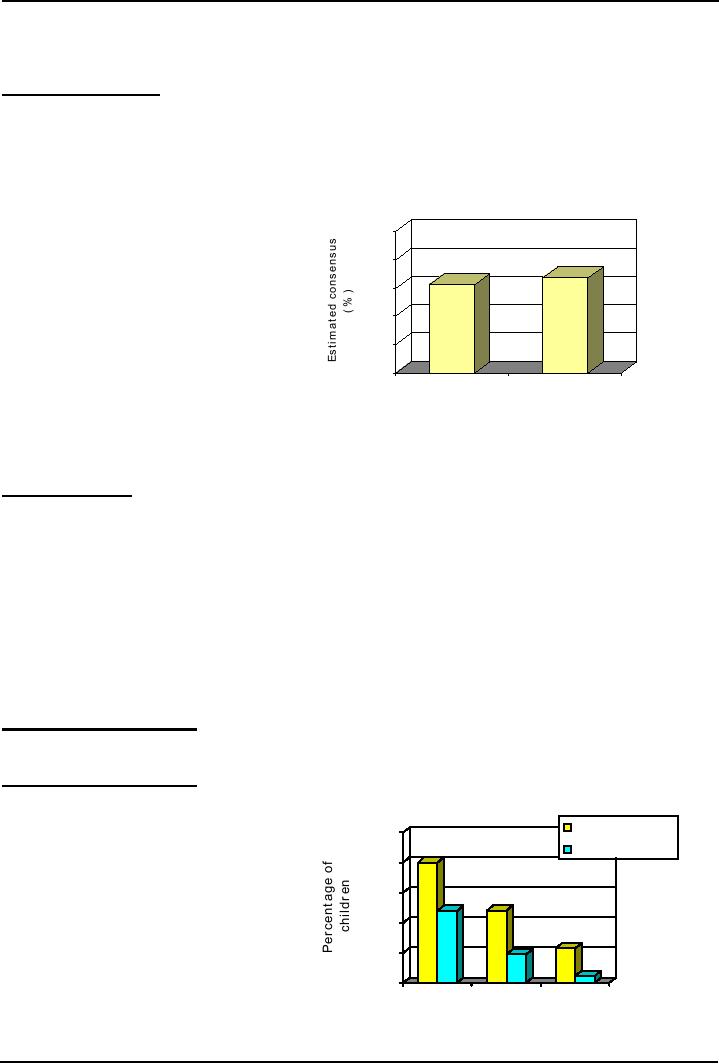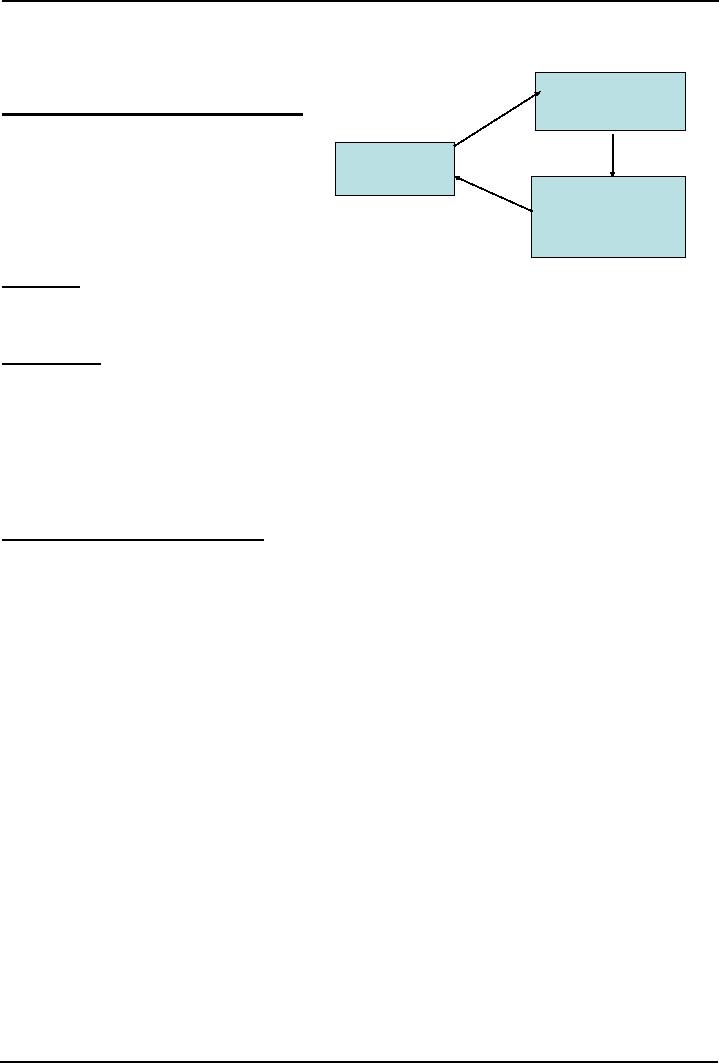 |

Social
Psychology (PSY403)
VU
Lesson
19
SOCIAL
COGNITION (CONTINUE.......)
Aims
�
To
introduce how past events
and expectations affect our social
thinking.
Objectives
�
To
discuss the how our
recollection of past events
can affect our social
thinking.
�
To
describe how do our expectations
shape our social
thinking.
�
To
help students use this
knowledge in their personal life
through activities and applied
social
psychology
lab.
What
are some ways of thinking about
the past?
Hindsight
bias
�
The
tendency, once an event has
occurred, to overestimate our ability to have
foreseen the outcome
�
Fueled
by our desire for making
sense
�
Does
not occur for very unusual and
bizarre events
Counterfactual
Thinking
�
Counterfactual
reasoning involves
imagining alternative outcomes
(what if thinking).
�
Most
likely when people experience unexpected
or negative events.
�
"Downhill"
changes more easily imagined
than "uphill" changes
�
People
engage in counterfactual reasoning to
make themselves feel better
and to help prepare
themselves
for the future.
�
Sometimes
not only ineffective in
emotional coping but also
downright unproductive; study
by
Davis
et al. (1996) of people who
had lost spouse or child. People
who indulged themselves
in
imagination
how the tragedy could have
been averted by mentally undoing
things preceding it
felt
more
distressed and guilty.
How
do expectations shape our
social thinking?
�
False
consensus
�
Confirmation
bias
�
Self-fulfilling
prophecy
�
Just
world belief
�
Learned
helplessness
The
False Consensus
effect
�
The
tendency to exaggerate how common one's
own opinions are in the general
population (Gross
&
Miller, 1997; Muller et al.,
2002).
�
Based
on the belief that our
opinions are fairly
typical
Ross,
Greene, & House' stuy (1977)
�
The
researchers asked students the
following question: "Would
you walk around campus
for thirty
minutes
wearing a large sandwich board
saying EAT AT JOE'S!" (Traders
Joe is a famous US
take-away)
�
Then
they were asked to estimate the number of
students who would make the
same choice
�
Students
agreed to do so estimated that 62%
will agree and those who
disagreed estimated
that
67%
will not agree.
76

Social
Psychology (PSY403)
VU
Figure
1 illustrates this
study:
Ross,
Greene, & House (1977)
Explanation
of the FCE
�
The
availability heuristic:
"our
self
concepts serve as the
lens
through
which we view others
(Kulig,
2000): Our own
self-
Estimated
consensus to wearing
beliefs
are easily recalled
from
sandwich
board
memory
making them most
accessible
(available) when we
100
judge
whether others agree
with
us
80
67
62
�
False-uniqueness
belief: The
60
tendency
to underestimate how
40
common
one's own desirable
traits
ad abilities are in the
20
general
population. It appears
0
to
be a product of the self
Agreed
Disagreed
serving
bias which is
a
Decision
tendency
to more often attribute
positive
than negative traits
to
ourselves
Confirmation
bias
This
selective attention inhibits problem
solving when our solution is
incorrect.
�
The
tendency to seek information that
supports our beliefs while
ignoring disconfirming
information
�
When
you look for the bad in
mankind expecting to find
it, you surely will
(Lincoln, 1809-1865)
�
For a
man always believes more
readily that which he prefers (Francis
Bacon, 1561-1626)
�
Synder
& Swann (1978) asked research
participants to find out
whether the person they were
about
to
interact was an introvert or
extravert. Consistent with the
confirmation bias, the questions
that
participants
asked were biased in the direction of the
original question.
�
Usually
caused by taking cognitive
shortcuts, but may also be
due to our desire to get along
with
others;
asking matching questions (Lyens,
1990)
The
Self-fulfilling prophecy
The
process by which expectations about a
person or group leads to the
fulfilment of those expectations
IQ
improvement as a function of the
Rosenthal
& Jacobson' study
(1968)
self-fulfilling
prophency
�
Teachers
told that `tests'
had
revealed
certain students
were
Bloomers
100
`bloomers'
and should improve
Other
students
substantially
over the year
80
�
The
20% `bloomers' were
actually
60
randomly
chosen
�
IQ
tested 8 months later
40
�
Would
teachers'
expectations
20
enhance
the achievements of the
selected
pupils?
0
Figure
2 illustrates this study in
the
10
IQ
20
IQ
30
Q
following:
points
points
points
gained
gained
gained
77

Social
Psychology (PSY403)
VU
The
development of self-fulfilling
prophecy
The
development of self-fulfilling
prophecy
has
been explained in Figure 3 as
given
below:
Perceiver
acts toward the
Target
based on the
The
Just-World Hypothesis (Lerner,
1980)
Step
1
expectations
�
A
belief system in which the
world is
perceived
to be a fair and equitable
Step
2
Perceiver
forms
place,
with people getting what
they
Expectations
about
deserve
the
target
Target
interprets the
�
Provides
an illusion of control `if
we
perceiver's
actions and
Step
3
responds
so that his behavior
are
good people good things
will
is
Consistent with
perceiver's
happen
to us'
expectations
Advantages:
�
Related to
good psychological adjustment (Ormel
& Schaufeli, 1991), improves
relationships
(Lipkus
& Bissonnette), 1996 and reduces
stress (Lipkus et al.,
1996).
Disadvantages
�
Defensive
attribution (Shaver,
1970)
�
Blame
victims for their own
misfortune to retain the
belief that bad things only
happen to bad
people
(and so a similar tragedy will
not befall us!)
�
qualified
by similarity (Burger,
1981)
�
What
happens when people
believing in a JW encounter contradictory
outcomes? Like Earthquakes
or
9/11. If the event was truly
without personal fault, people
with BJW often respond
with revenge
(Kaiser
et al., 2004)
Expecting
failure breeds
helplessness
�
The
passive resignation produced by repeated
exposure to negative events that
are perceived to be
unavoidable.
In human beings first reactions are of
anxiety, however as the extent of
uncontrollable
events
increases and they begin to
feel helpless, anger is replaced with
depression.
�
First
discovered in animal research (Seligman
& Maier, 1967)
�
Not
everyone experiences it, but
people's attributions about the causation
of initial lack of
control
determines
the outcome (Abramson et al.,
1978)
Applied
Social Psychology Lab
1
�
How do
you explain negative events
in your life?
�
Pessimistic
vs. optimistic explanatory styles:
habitual ways to attribute
negative/positive events to
internal,
stable, global /external, unstable,
specific causes (Nolen-Hoeksma,
1992; Sweeney et al.,
1986)
�
The
optimist sees the rose and
not its thorns; the
pessimist stares at the thorns, oblivious
to the rose
(Khail
Gibran, Lebanese poet,
1883-1931)
�
Archival
study about college
graduates describing their
wartime experience classifying
their
pessimistic
style in 1946; not at that
time but by the age of 45,
when life became more
variable,
those
having pessimistic explanatory style in
their youth showed more
health related problems
(Peterson
et al., 1988)
�
Archival
study showed positive
correlation b/w pessimistic style and
health problems (Peterson et
al.,
1988)
�
Optimists
have better immune
system
�
Use of
Cognitive therapy to change
self-attributions: keeping a diary of
success and failures, and
identifying
how you contributed to your
successes and failures; train to
engage in self-serving bias.
78

Social
Psychology (PSY403)
VU
Applied
Social Psychology Lab
2
After
9/11 FBI office was
flooded with calls reporting possible
suspects. Keeping in view
that virtually
every
suspect had an Arab descent,
answer the following questions.
1.
What cognitive heuristic was
employed in these social judgments?
(Answer is representativeness
heuristic)
2.
Why people were relying on
this heuristic? (Answer is
availability heuristic)
Reading
4.
Franzoi, S. (2003). Social
Psychology. Boston:
McGraw-Hill. Chapter 5.
79
Table of Contents:
- INTRODUCTION TO SOCIAL PSYCHOLOGY:Readings, Main Elements of Definitions
- INTRODUCTION TO SOCIAL PSYCHOLOGY:Social Psychology and Sociology
- CONDUCTING RESEARCH IN SOCIAL PSYCHOLOGY:Scientific Method
- CONDUCTING RESEARCH IN SOCIAL PSYCHOLOGY:Evaluate Ethics
- CONDUCTING RESEARCH IN SOCIAL PSYCHOLOGY RESEARCH PROCESS, DESIGNS AND METHODS (CONTINUED)
- CONDUCTING RESEARCH IN SOCIAL PSYCHOLOGY OBSERVATIONAL METHOD
- CONDUCTING RESEARCH IN SOCIAL PSYCHOLOGY CORRELATIONAL METHOD:
- CONDUCTING RESEARCH IN SOCIAL PSYCHOLOGY EXPERIMENTAL METHOD
- THE SELF:Meta Analysis, THE INTERNET, BRAIN-IMAGING TECHNIQUES
- THE SELF (CONTINUED):Development of Self awareness, SELF REGULATION
- THE SELF (CONTINUE…….):Journal Activity, POSSIBLE HISTORICAL EFFECTS
- THE SELF (CONTINUE……….):SELF-SCHEMAS, SELF-COMPLEXITY
- PERSON PERCEPTION:Impression Formation, Facial Expressions
- PERSON PERCEPTION (CONTINUE…..):GENDER SOCIALIZATION, Integrating Impressions
- PERSON PERCEPTION: WHEN PERSON PERCEPTION IS MOST CHALLENGING
- ATTRIBUTION:The locus of causality, Stability & Controllability
- ATTRIBUTION ERRORS:Biases in Attribution, Cultural differences
- SOCIAL COGNITION:We are categorizing creatures, Developing Schemas
- SOCIAL COGNITION (CONTINUE…….):Counterfactual Thinking, Confirmation bias
- ATTITUDES:Affective component, Behavioral component, Cognitive component
- ATTITUDE FORMATION:Classical conditioning, Subliminal conditioning
- ATTITUDE AND BEHAVIOR:Theory of planned behavior, Attitude strength
- ATTITUDE CHANGE:Factors affecting dissonance, Likeability
- ATTITUDE CHANGE (CONTINUE……….):Attitudinal Inoculation, Audience Variables
- PREJUDICE AND DISCRIMINATION:Activity on Cognitive Dissonance, Categorization
- PREJUDICE AND DISCRIMINATION (CONTINUE……….):Religion, Stereotype threat
- REDUCING PREJUDICE AND DISCRIMINATION:The contact hypothesis
- INTERPERSONAL ATTRACTION:Reasons for affiliation, Theory of Social exchange
- INTERPERSONAL ATTRACTION (CONTINUE……..):Physical attractiveness
- INTIMATE RELATIONSHIPS:Applied Social Psychology Lab
- SOCIAL INFLUENCE:Attachment styles & Friendship, SOCIAL INTERACTIONS
- SOCIAL INFLUENCE (CONTINE………):Normative influence, Informational influence
- SOCIAL INFLUENCE (CONTINUE……):Crimes of Obedience, Predictions
- AGGRESSION:Identifying Aggression, Instrumental aggression
- AGGRESSION (CONTINUE……):The Cognitive-Neo-associationist Model
- REDUCING AGGRESSION:Punishment, Incompatible response strategy
- PROSOCIAL BEHAVIOR:Types of Helping, Reciprocal helping, Norm of responsibility
- PROSOCIAL BEHAVIOR (CONTINUE………):Bystander Intervention, Diffusion of responsibility
- GROUP BEHAVIOR:Applied Social Psychology Lab, Basic Features of Groups
- GROUP BEHAVIOR (CONTINUE…………):Social Loafing, Deindividuation
- up Decision GROUP BEHAVIOR (CONTINUE……….):GroProcess, Group Polarization
- INTERPERSONAL POWER: LEADERSHIP, The Situational Perspective, Information power
- SOCIAL PSYCHOLOGY APPLIED: SOCIAL PSYCHOLOGY IN COURT
- SOCIAL PSYCHOLOGY APPLIED: SOCIAL PSYCHOLOGY IN CLINIC
- FINAL REVIEW:Social Psychology and related fields, History, Social cognition